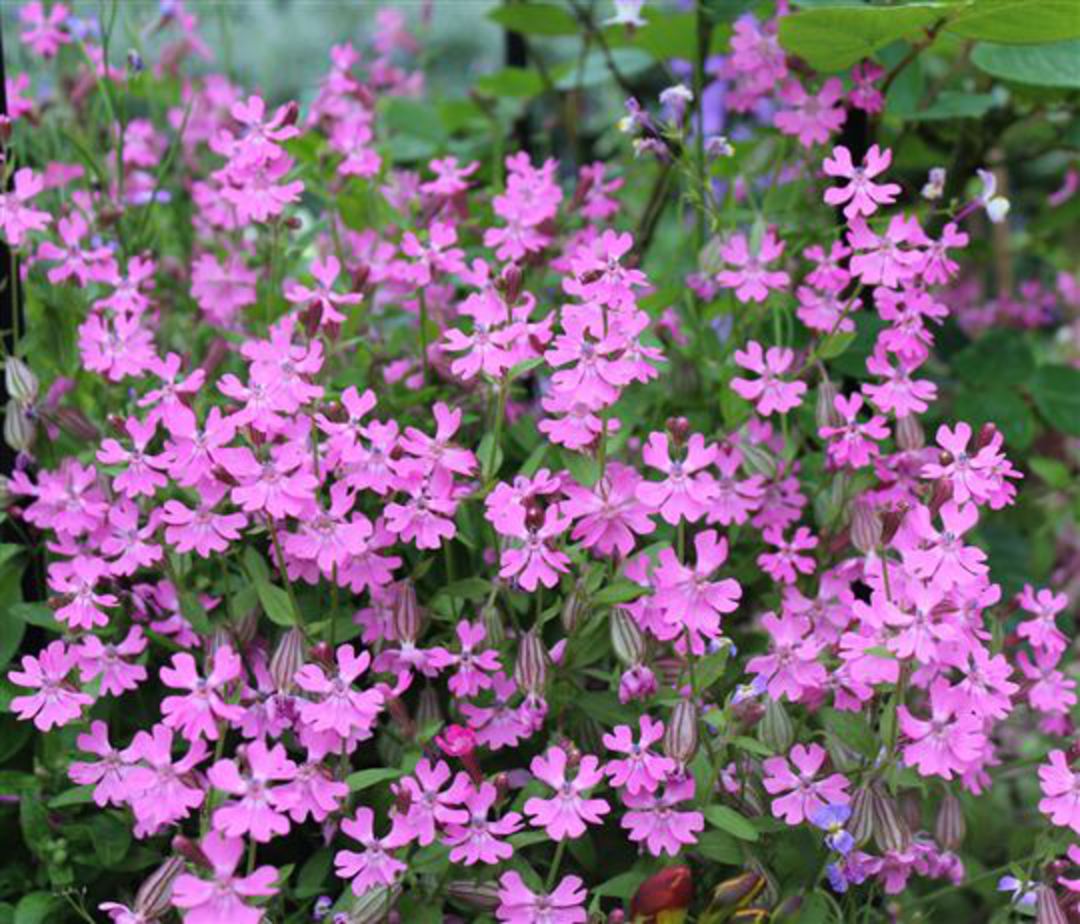
Dharaseeds
Nodding Catchfly Seeds
Estimated delivery between April 15 and April 18.
Nodding Catchfly (Silene nutans) is a beautiful perennial flower known for its charming, nodding flowers and delicate appearance. Native to parts of Europe and Asia, it is prized for its ability to attract pollinators and add beauty to gardens. The plant has a unique characteristic: its flowers seem to droop or nod, giving it a distinct look that sets it apart from other flowering plants. It's an excellent choice for adding color and wildlife support to your garden.
Key Benefits
- Attracts Pollinators: Nodding Catchfly is highly attractive to pollinators, particularly bees, butterflies, and hummingbirds, which helps boost biodiversity in your garden.
- Beautiful Flowers: The plant produces vibrant pink or white, funnel-shaped flowers that add a soft, elegant touch to any garden or wildflower patch.
- Wildlife-Friendly: Provides nectar for pollinators and shelter for small wildlife, helping maintain a healthy garden ecosystem.
- Easy to Grow: Nodding Catchfly is relatively easy to grow from seeds, making it a good choice for beginner gardeners or those looking to add more native plants to their space.
Variety Features
- Plant Type: Perennial flowering plant.
- Height: Typically grows to about 12-24 inches tall, making it a good choice for both the front and middle rows of flower beds.
- Flower Color: The flowers can range from soft pinks to white, often tinged with darker colors.
- Leaves: Narrow, green leaves with a slightly hairy texture. The plant has a bushy, spreading habit.
- Flowers: Nodding, funnel-shaped flowers that grow in clusters at the top of the stems. The flowers bloom in mid to late summer.
Planting Instructions
Best Planting Season
- Spring or Fall: Plant in the spring once the frost has passed or in the fall for a late-season bloom the following year. If you are starting from seed indoors, plant about 6-8 weeks before the last frost date.
Ideal Location
- Light Requirements: Prefers full sun but can tolerate partial shade, especially in hotter climates.
- Soil: Well-draining, moderately rich soil. It is adaptable to a variety of soil types, though it thrives in loamy or sandy soils.
Planting Details
- Sowing Depth: Sow the seeds 1/8 inch deep. Lightly cover the seeds with a thin layer of soil and gently firm them down to ensure good seed-to-soil contact.
- Spacing: Space the seeds or young plants 6-12 inches apart, depending on the variety, to allow for good air circulation and proper growth.
Germination
- Temperature: Ideal germination temperatures range from 60°F to 75°F (15°C-24°C).
- Time to Germinate: Seeds typically germinate within 10-20 days if kept in the right conditions.
- Moisture: Keep the soil consistently moist but not waterlogged until germination occurs. Once established, the plant is fairly drought-tolerant.
Care Instructions
Watering
- Watering Needs: Water regularly during the establishment phase. Once the plant is established, it can tolerate periods of drought, though it will perform better with consistent moisture.
Temperature
- Hardiness: Nodding Catchfly is hardy in USDA zones 4-8, meaning it can handle cold winters and is a great choice for most temperate climates.
- Tolerant of Heat: While it prefers cooler temperatures, Nodding Catchfly can tolerate some summer heat if provided with adequate moisture.
Pruning
- Maintenance: Deadhead spent flowers regularly to encourage more blooms and prevent the plant from self-seeding in unwanted areas.
- Cutting Back: In late fall or early spring, cut the plant back to the ground to promote healthy new growth.
Harvesting
- Flowers: Nodding Catchfly flowers can be harvested for use in floral arrangements when they are in full bloom. Make sure to leave some flowers for pollinators to enjoy.
- Seeds: Harvest seeds once the flower heads have dried out. Gather the seeds and store them in a cool, dry place for the next planting season.
Storage
- Seeds: Store seeds in an airtight container in a cool, dry place until ready for sowing.
Culinary Uses
- Edible Flowers: The flowers of Nodding Catchfly are sometimes used as garnishes in salads, teas, and dishes for their delicate flavor and beauty, though they are not commonly used for culinary purposes.
Conclusion
Nodding Catchfly is a stunning addition to any garden, especially for those looking to attract pollinators. With its easy care requirements and beautiful, nodding flowers, it provides both aesthetic value and ecological benefits. Whether you're growing it in a cottage garden, wildflower patch, or mixed flower bed, this perennial is sure to brighten up your space and support local wildlife.







